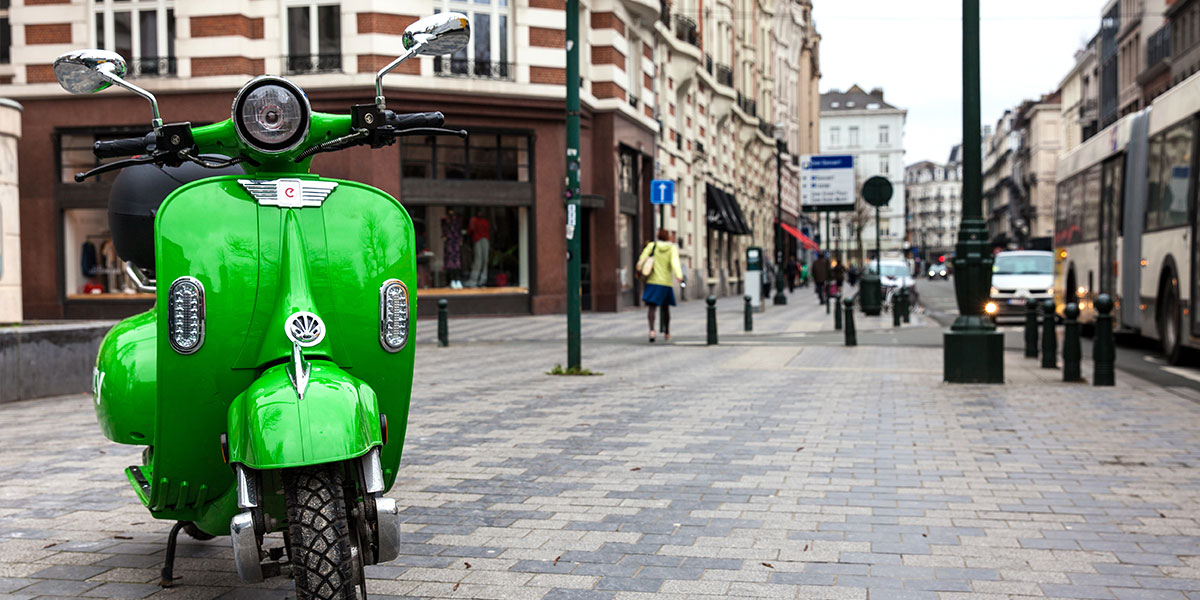2021 witnessed a record sale of electric two-wheeler (E2W) vehicles in India. Over 2.4 lakh units were sold with a 132% growth. To add to this glory, 2022 is likely to see a 6x growth in E2W vehicle sales. Given an optimistic response, many OEMs are now planning to expand dealership networks pan-India. Since this segment in India is still nascent and on the cusp of disruption, E2W vehicle dealerships have a lot to contend with, if they are to make it a memorable buying experience for customers.
Amit Das, founder, and CEO of Electric One sat down with Siddharth Jaiswal, Automotive Practice Head at Netscribes, to discuss the evolving fate of E2W vehicle dealerships in India as well as ways to boost consumer confidence in this segment. Electric One is one of the pioneers in the multi-brand dealership network for E2W in India.
Siddharth: The E2W space in India has exploded in the past few years. Is this merely a spike from early adopters or do you see an organic shift in the Indian consumers?
Amit: The growth of any product line depends on several factors. Currently, the electric mobility space in India is going through a transition phase. As regulations improve, charging infrastructure becomes stronger, and energy standards become a reality, the sector will grow. The growth will take a couple of more years to become stabilized wherein good companies will produce quality electric vehicles. Also, these EVs will need to comply with all regulatory requirements and exist in a more hospitable environment with a widely accessible charging infrastructure.
Above all, the regulatory bodies will need to prevent anybody and everybody from jumping on the electrification bandwagon without proper safety standards. Only products that have been rigorously vetted and approved should be launched to build confidence in this new mode of mobility.
Siddharth: With India being the largest two-wheeler market in the world, E2W is a natural use case leading to a vibrant start-up ecosystem. What kind of market potential do you see for such start-ups? Can the legacy OEMs and new-age start-ups coexist in India?
Amit: Most companies that claim to be ‘startups’ today are opportunistic. These companies follow business models wherein they bring cheap quality components from China, assemble them in India, or import low-cost batteries and sell them in local markets. While this may be a lucrative option initially, it’s harmful from a safety standpoint and not sustainable in the long term.
A startup should be able to innovate and needs to solve a problem statement. Instead of thinking about building an electric vehicle, these companies should focus on building a single component that will add value to the product. The confidence of end consumers goes for a toss when they find that a product isn’t functioning as expected which in turn leads to bad word-of-mouth.
Siddharth: We are observing a radical shift in how EV vehicles are being sold to end consumers. With Tesla’s direct-to-customer model and Ola’s at-home repair and maintenance model. In your opinion how is the dealership business model evolving for E2W vehicles?
Amit: For a country like India with huge manpower, eradicating the middle-men and going direct-to-customer might not be the best model. Bringing service to homes also adds to acquisition costs and is quite complex, especially for new forms of electric mobility. E2W vehicle brands in India should encourage the establishment of experience centers and get more people involved in the business to support the ecosystem rather than focusing on profits in the beginning. While D2C has its benefits including cost-efficiency and profitability, an interactive dealership model is most likely to succeed for the EV segment.
One major reason is that E2W vehicles, unlike consumer electronics, require interactivity to provide service engagement and reach consumers in the Tier II and Tier III locations. In India, buying a vehicle is a family affair and it has a sentimental appeal. They prefer to visit centers, interact with experts to build trust, and find confidence from test rides to vehicle service that they deserve. Plus, the EV segment should bring more employment opportunities and D2C might hamper that growth.
Big companies in the past have failed in India due to a lack of interaction. The entire lifecycle requires a human connection: building a product, testing it, finding the best dealership model to bring in consumers, and the reverse cycle of servicing, engagement, upgrading, and recycling in the secondary sales market. Any E2W vehicle has a lifecycle of seven years post which it can be resold in the market. The buying experience needs to be solid to keep this ecosystem robust.
Siddharth: From your interactions with E2W OEMs, what can you tell us about their expectations from the dealership node of the value chain?
Amit: OEMs today are focusing a lot on providing people with test drives. In one of the forums, when I asked people if they have test-driven an ICE two-wheeler, 60% of them agreed. But when asked if they have also experienced an E2W vehicle test drive, less than five people nodded. Buying is secondary, people need to first experience the look and feel of an E2W.
Bajaj, Vespa, and Honda scooters are legacy ICE vehicles. People know how these vehicles behave. But not many know how it feels to drive an electric scooter. People need to be aware of the usage pattern: whether they can wash the E2W vehicle, when can components be replaced, how to take care of the battery, etc. OEMs are now trying to build this awareness.
Moreover, OEMs are also ensuring that dealers ask the right questions to the end-users to understand their parameters and needs to buy an E2W vehicle. From test drives to awareness and understanding of consumer expectations, OEMs are now trying to bridge multiple gaps.
Siddharth: Given your proximity to E2W vehicle customers in India, what are the typical buyer personas? Are these first-time e-scooter buyers or people migrating from conventional ICE?
Amit: Currently, India has more first-time adopters in the E2W vehicle segment. This buyer segment wants to experiment, feel and display a unique statement that they are being environmentally conscious with this purchase. On the other hand, some service-class people within the 20-40 years age range want to save money and prioritize sustainability. These make up for the first-time E2W vehicle buyers in India. Most often, E2W buyers are first-time scooter buyers who do not have prior experience in owning a scooter. Whereas, a small portion of customers consists of value-centric migrants from conventional ICE scooters seeking cost-effectiveness.
Siddharth: How are dealerships like yourself helping in inspiring consumer confidence toward E2W vehicles?
Amit: It’s a collective responsibility of OEMs and dealerships to ensure that users’ problems are solved immediately with no questions asked. The priority is to sell no-nonsense E2W vehicles. However, if a vehicle issue does arise, dealerships should repair, replace, and have an inventory of critical as well as non-critical parts. Consumer confidence will increase if dealers and OEMs can achieve this collaboratively. This will also increase overall sales.
Siddharth: EV finance is claimed to be a roadblock for E2W adoption, especially for the fleet business. Where do you see this aspect going? What are the key concerns of financial intuitions towards E2W vehicles?
Amit: Finance is a major issue. Most of the banks have not yet come up with solutions for lower-speed segment EVs due to tough collection parameters. One solution is to register all lower and mid-segment E2W vehicles. Registration costs can be nominal. This will ensure that banks will be able to trace and identify the product which will lead to financing. On the other hand, NBFCs and other online portals are rising to the occasion and financing such vehicles. However, their interest rates are significantly high. This is not suitable for the consumers and should be looked into.
Also, energy-as-a-service in EMIs is an interesting option that can be explored. For eg., people can buy scooters and pay EMIs for swappable batteries.
Siddharth: Multi-brand dealerships are not very common in India. Can you tell us about your journey in establishing a multi-brand E2W dealership?
Amit: Electric One is the first company to start multi-brand dealerships in an organized manner in India. A business model that puts vehicles from different brands under one roof can help increase sales probability. We help OEMs penetrate many locations where they couldn’t sell otherwise. Their products get popular in such areas. From an end-consumer perspective, the wow factor lies in the reliability and awareness that multi-brand dealerships can provide them with. Even with huge competition from single-brand dealerships, we sell well. This is because our dealership comes with workshops, service stations, and battery capabilities.
Such single-roof-multi-brand collaboration only helps the end-consumer as it increases ease of business and interaction. Electric One currently has 82 dealerships. However, we plan to add 50 more dealerships every quarter via a strict screening process.
Siddharth Jaiswal leads the automotive research team at Netscribes and has been a part of the industry for close to a decade. He harbors a keen interest in the future of mobility, autonomous technology, and vehicle E/E architecture. In his free time, Siddharth loves tuning engines, riding his vintage bike, and spending time with family. You can reach out to him at siddharth.jaiswal@netscribes.com.

Amit Das
Founder and CEO, Electric One
Amit is an entrepreneur with 16 years of experience across SaaS-based products, M&A, start-ups, and international business. He founded Electric One, an e-mobility marketplace, to promote the green revolution across India and SEA countries. In his previous roles, Amit was part of the founding team of a SAAS startup and later played a leadership role in another business, both of which were acquired by US firms. He has spearheaded B2B sales, enterprise business, and strategic initiatives for different organizations.





